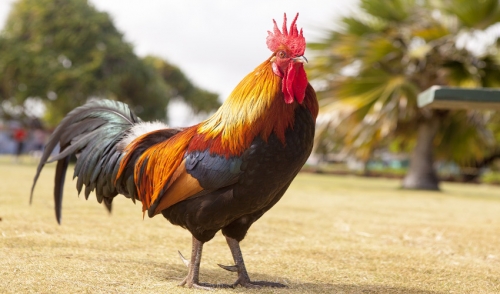
Keep Poultry Diseases “Cooped Up”
You're the best protection your birds have. By taking the necessary steps, you can reduce the risk of disease-causing germs going to or coming from your home or farm. Understanding the importance of these steps can help you and your family members avoid spreading disease among your poultry and livestock.
First things first, clean and disinfect vehicles and equipment. Clean your manure spreaders, tractors truck tires and undercarriages with a strong detergent – then apply disinfectant to kill avian influenza and other viruses that can linger on the surfaces.
Don’t forget to wear your sanitized coveralls and boots, and make sure that everyone who enters your premises wears them too! Poultry disease viruses can be spread by shoes and clothing of people who come into contact with an infected flock.
The next step would be to practice an “all in – all out” poultry management. By avoiding skimming flocks – birds left behind are exposed to work crews and equipment that may be carrying poultry disease viruses. Make sure to process each lot of birds separately, and clean and disinfect poultry houses between flocks.
Another way to keep poultry diseases from your flock is to allow only essential personnel onto your farm. Secure entry gates and lock all poultry buildings to ensure that your flock is not exposed to diseases.
Avoid contact with game birds and migratory waterfowl. By keeping your flock from being in contact with pet birds, ducks, geese or other game birds you are taking that extra step in providing safety to your flock. Even though, it is nice to feed the geese, it is best to keep them separate because game birds are suspected carriers of poultry diseases.
The most important way to reduce the risk of disease-causing germs is to know the warning signs of major avian diseases. Higher death losses; sudden drop in egg production; swelling of head, eyelids, combs and hocks; diarrhea; purplish-blue coloring of wattles and combs, bloody nostrils discharge; loss of appetite and incoordination. These are all keep indicators that your chickens are showing signs of diseases.
